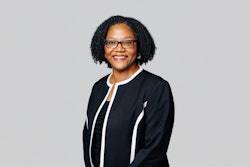 Dr. Freeman Hrabowski, president of University of Maryland, Baltimore County
Dr. Freeman Hrabowski, president of University of Maryland, Baltimore County
That was the central question during a virtual panel on Thursday, spurred by Academic Pipeline Programs: Diversifying Pipelines from the Bachelor’s to the Professoriate, a new book from Drs. Curtis Byrd and Rihana Mason at Georgia State University (GSU). The researchers outlined the best practices of 21 successful programs, detailing how their learnings can be used, replicated, and promoted to tackle the persistent diverse talent gap.
“We went out and found the top-tier initiatives to show in a concise and regimented way what these programs can do from pre-K to 12 all the way to college and graduate or professional schools,” said Byrd, special advisor to the Provost at GSU.
On a panel with Byrd and Mason, Dr. Freeman A. Hrabowski, president of University of Maryland, Baltimore County (UMBC), shared insights from what has consistently been seen as a national STEM pipeline program model: UMBC’s Meyerhoff Scholars Program. Dr. Jamal Watson, moderated the discussion.
“We all know the challenges. Students of color all see the problem,” Hrabowski said. “You have over 70% of professors who are white, and you’re talking about 10 or 11% of underrepresented minorities who are faculty.”
The numbers in STEM are especially uneven. Fewer than 2% of scientists in all of the national agencies in the country are Black while under 4% are Latinx, noted Hrabowski. The Meyerhoff Scholars Program has been working to increase diversity in STEM since its 1988 founding.
“Although many of us know about and have academic pipeline programs, we’re not often aware of how they can be organized strategically to promote advancement,” said Mason, a research scientist in psychology at GSU on digging into how programs like Meyerhoff work. “The goal of our book is to help institutions identify strengths and redundancies to fill in gaps of support that underrepresented groups need to succeed.”
















